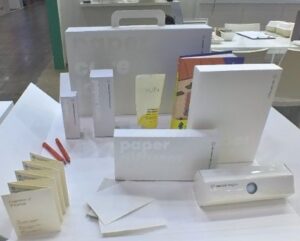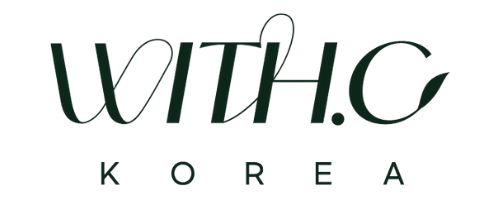“What does smart packaging for sustainable beauty refer to?”
About a month ago, WITH.C KOREA emphasized in their post, “6 Cosmetics Trends 2025: Attending a Beauty Seminar,” that the keyword “sustainability” has become a prominent trend in the cosmetics industry. Sustainability is no longer just an option but a crucial strategy for beauty brands to survive.
This was evident at the CI KOREA exhibition in April, where a competition on sustainable packaging was held, with awards presented by Government-authorized organization.
At the event, we encountered packaging designs that were not only recyclable but also significantly more convenient. With the focus shifting to smart packaging and recycling, security was much stricter compared to past events where sample distribution and photo-taking were allowed. This reflects just how essential sustainability has become in the industry.

Now, since packaging represents the brand’s philosophy and is the first impression consumers receive, many brands are striving to develop eco-friendly yet distinctive packaging solutions.
WITH.C KOREA supports discussions with manufacturers from the ODM stage to help identify suitable packaging options that align with each brand’s identity.
🌿 Why Now? Why is Sustainable Packaging Important?
According to the First Insight & Wharton School Report published in 2020, 73% of Gen Z and Millennial consumers stated that they are willing to pay a premium for sustainable brands.Due to this shift in consumer behavior, global retailers targeting international customers now consider recyclable packaging as a crucial supply standard.
Regulations are also tightening. Policies such as the EU Packaging & Packaging Waste Regulation (PPWR) and UAE’s plastic packaging restrictions are influencing OEM/ODM strategies significantly.
A brief overview of these policies is as follows.
[EU Packaging & Packaging Waste Regulation (PPWR)]
The PPWR is a new EU packaging regulation that took effect on February 12, 2025, mandating that all packaging must be either recyclable or reusable. Key details include:
1. Recyclability: By 2030, all packaging must be recyclable, and those with less than 70% recycling efficiency cannot be introduced into the market. This means packaging must be designed with recyclability in mind.
2. Mandatory use of recycled materials: Plastic packaging must contain a minimum amount of recycled plastic. For example, PET food packaging must include at least 30% recycled plastic by 2030 and 50% by 2040.
3. Ban on single-use packaging: Certain single-use packaging, such as mini shampoo bottles and thin plastic bags, will be banned from 2030.
Packaging minimization: Excessive packaging must be avoided, and both weight and volume should be minimized.
[UAE’s Single-Use Plastic Packaging Restrictions]
To protect the environment and promote sustainability, UAE has implemented a phased ban on single-use plastic products. The timeline is as follows:
1. January 1, 2024: Ban on the import, production, and distribution of single-use plastic shopping bags.
2. January 1, 2025: Ban on plastic sticks, polystyrene food containers, plastic table covers, plastic cotton swabs, plastic straws, and single-use polystyrene cups.
3. January 1, 2026: Ban on single-use plastic cups and lids, single-use plastic cutlery, plastic food containers, and plastic plates.
Since South Korea often follows European trends, domestic regulations are likely to change in a similar direction.
Then, what are the elements that make packaging qualify as smart packaging?
📦 Key Elements of Smart Packaging Solutions
1. Mono-material Containers: Containers made of a single material reduce the complexity of recycling processes and minimize environmental impact. Examples: PP single-material tubes, PET single-body + cap.
2. Label-Free Packaging: Packaging with direct printing (Inkjet/UV) eliminates the need for label removal, making disposal easier. It also enhances the brand’s minimalist & eco-friendly image.
3. Refillable & Reusable Packaging: A combination of pouch refills + reusable outer containers is gaining popularity. This method reduces plastic usage by an average of 60%.
4. QR Smart Packaging: Embedding QR codes or NFC technology allows consumers to easily access ingredient details, recycling guides, and usage instructions. It fulfills both sustainability and user experience (UX) goals.
Sustainable packaging isn’t as complicated as it seems. Start your sustainable beauty journey with the packaging that consumers first see. Eco-friendly packaging isn’t just about wrapping—it’s an expression of the brand’s philosophy and responsibility.
WITH.C KOREA continues to propose better packaging solutions to help brands achieve sustainable competitiveness in the market.
